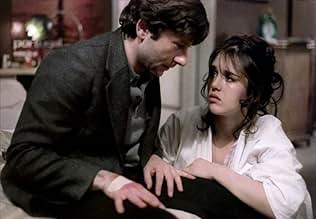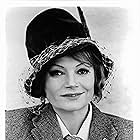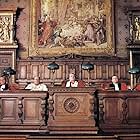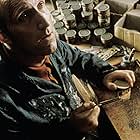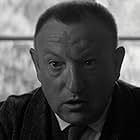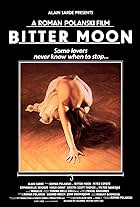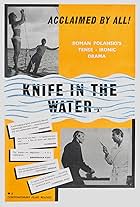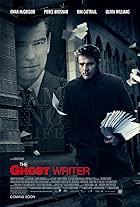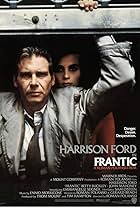A bureaucrat rents a Paris apartment where he finds himself drawn into a rabbit hole of dangerous paranoia.A bureaucrat rents a Paris apartment where he finds himself drawn into a rabbit hole of dangerous paranoia.A bureaucrat rents a Paris apartment where he finds himself drawn into a rabbit hole of dangerous paranoia.
- Awards
- 2 nominations
Claude Piéplu
- Neighbor
- (as Claude Pieplu)
Louba Guertchikoff
- Wife at accident
- (as Louba Chazel)
- Director
- Writers
- All cast & crew
- Production, box office & more at IMDbPro
Storyline
Did you know
- TriviaAlong with Repulsion (1965) and Rosemary's Baby (1968) this film is part of a loose trilogy by Roman Polanski dealing with the horrors faced by apartment and city dwellers.
- GoofsWhen Trelkovsky is unpacking as he moves into the apartment, a crew member is reflected in the small mirror adjacent to the kitchen sink. Two crew members are then reflected in the armoire's mirror as Trelkovsky opens it.
- Quotes
Trelkovsky: [while looking at himself in the mirror] Beautiful. Adorable. Goddess. Divine. Divine! I think I'm pregnant.
- Crazy creditsThe film has no end credits; only the Paramount logo.
- Alternate versionsAlthough the UK cinema version was complete the 1986 CIC video was cut by 6 secs by the BBFC to remove a brief extract of the banned nunchaku scene from Enter the Dragon (1973) (seen by Trelkovsky and Stella during a cinema visit). The cuts were fully waived in the 2004 Paramount DVD.
- ConnectionsFeatured in Revanche (1983)
- SoundtracksCour D'Immeuble
Written and Performed by Philippe Sarde Et Orchestre
Featured review
This beautifully directed and photographed movie seems to be full of allusions. It demands attention and may be boring for people who just want plain action or a quick succession of blood curdling horror scenes. Some knowledge of art and film history is helpful here.
The cast is marvelous. You meet Shelley Winters as the concierge and Melvyn Douglas as the proprietor of an old apartment house in the midst of a moldy 19th century Parisian district. The two great veteran actors are used for what they are icons. Every movie buff who likes The French Connection II will experience a pleasant feeling of "deja vu". The same actor who serves Gene Hackman's Popeye Doyle a whisky in a Marseilles bar and becomes his only buddy in France is now the waiter who brings the tenant a cup of cocoa in a Paris bar. He even wears the same wardrobe! The same can be said of French actor Bernard Fresson, Popeye's police contact in Marseilles. He plays the nasty, vulgar acquaintance of the tenant who wants to teach him how a tenant should behave. Polanski plays the kafkaesque main character himself. His performance impressed me very much, he is not only one of the most interesting directors I know but an immensely talented actor too.
The way people look in this movie reminded me very much of the Muppet show (incidentally the TV series was started the same year The Tenant was released). The characters are deliberately overdrawn and feel like caricatures (nobody more so than the sexy Isabelle Adjani character not exactly a Miss Piggy but not too far from it either). The way they were made up and filmed gives them a strong puppet-like appearance. The apartment house is realistic yet it looks more like a doll house than the set of Hitchcocks Rear Window. Muppets pop out of their compartments and do things that are banal or mysterious.
The Tenant deals mainly with the main character's paranoia. The apartment house offers a look into the tenant's troubled mind. The movie comments on the effects of bigotry and indifference but also on the perception of an individual who may give wrong meanings to certain events. The situation allows the introduction of signs and objects with symbolic values. The director made full use of the possibilities the movie offered here. I could not say I understood the meaning of it all (e.g. the tenant slaps a kid in the face in a park for no apparent reason), but I am sure it does not really matter. The tenant thinks there is a complot against him and he sees all events in this light. Even the fact that the barkeeper has run out of his beloved Gauloises bleues and presses Marlboros on him instead he sees as part of a devilish plan!
Despite the finely tuned dark colors and the dark thoughts of the main character they reflect, The Tenant is surprisingly light. Some may call it sophisticated camp. This lightness which is achieved with a peculiar sense of humor seems to be a trademark of Polanski's movies. He persues his tactics to look for the absurd in the midst of horrors. The ending is very grotesque. Ashamedly I have to admit it: It made me laugh.
Somehow The Tenant borrows from Polanski's earlier film Repulsion. But it has more flourish. The choice and the use of real locations is very good. Some ideas of this movie were integrated in Polanski's later film Frantic, including Polanski's apparent love for Paris garbage men and their equipment. Whoever likes The Tenant should look for movies of Finnish director Aki Kaurismäki. They are in the same vein.
The cast is marvelous. You meet Shelley Winters as the concierge and Melvyn Douglas as the proprietor of an old apartment house in the midst of a moldy 19th century Parisian district. The two great veteran actors are used for what they are icons. Every movie buff who likes The French Connection II will experience a pleasant feeling of "deja vu". The same actor who serves Gene Hackman's Popeye Doyle a whisky in a Marseilles bar and becomes his only buddy in France is now the waiter who brings the tenant a cup of cocoa in a Paris bar. He even wears the same wardrobe! The same can be said of French actor Bernard Fresson, Popeye's police contact in Marseilles. He plays the nasty, vulgar acquaintance of the tenant who wants to teach him how a tenant should behave. Polanski plays the kafkaesque main character himself. His performance impressed me very much, he is not only one of the most interesting directors I know but an immensely talented actor too.
The way people look in this movie reminded me very much of the Muppet show (incidentally the TV series was started the same year The Tenant was released). The characters are deliberately overdrawn and feel like caricatures (nobody more so than the sexy Isabelle Adjani character not exactly a Miss Piggy but not too far from it either). The way they were made up and filmed gives them a strong puppet-like appearance. The apartment house is realistic yet it looks more like a doll house than the set of Hitchcocks Rear Window. Muppets pop out of their compartments and do things that are banal or mysterious.
The Tenant deals mainly with the main character's paranoia. The apartment house offers a look into the tenant's troubled mind. The movie comments on the effects of bigotry and indifference but also on the perception of an individual who may give wrong meanings to certain events. The situation allows the introduction of signs and objects with symbolic values. The director made full use of the possibilities the movie offered here. I could not say I understood the meaning of it all (e.g. the tenant slaps a kid in the face in a park for no apparent reason), but I am sure it does not really matter. The tenant thinks there is a complot against him and he sees all events in this light. Even the fact that the barkeeper has run out of his beloved Gauloises bleues and presses Marlboros on him instead he sees as part of a devilish plan!
Despite the finely tuned dark colors and the dark thoughts of the main character they reflect, The Tenant is surprisingly light. Some may call it sophisticated camp. This lightness which is achieved with a peculiar sense of humor seems to be a trademark of Polanski's movies. He persues his tactics to look for the absurd in the midst of horrors. The ending is very grotesque. Ashamedly I have to admit it: It made me laugh.
Somehow The Tenant borrows from Polanski's earlier film Repulsion. But it has more flourish. The choice and the use of real locations is very good. Some ideas of this movie were integrated in Polanski's later film Frantic, including Polanski's apparent love for Paris garbage men and their equipment. Whoever likes The Tenant should look for movies of Finnish director Aki Kaurismäki. They are in the same vein.
- manuel-pestalozzi
- Jul 8, 2003
- Permalink
- How long is The Tenant?Powered by Alexa
Details
- Release date
- Country of origin
- Languages
- Also known as
- Stanar
- Filming locations
- Rue la Bruyère, Paris 9, Paris, France(apartment building at N°39)
- Production company
- See more company credits at IMDbPro
Box office
- Gross US & Canada
- $1,924,733
- Gross worldwide
- $1,924,733
Contribute to this page
Suggest an edit or add missing content



